Abstract
1 The observations which Paton (1957) interpreted as 'acute tolerance' and 'dependence' have been confirmed for coaxially stimulated segments of guinea-pig ileum and extended to the contractions evoked by field stimulation in the myenteric plexus-longitudinal muscle preparation. Evidence is adduced that the morphine receptors of the myenteric plexus are not involved in the two phenomena. 2 The contraction of the longitudinal muscle depressed by low concentrations of morphine, or levorphanol, can be restored to control level not only by high concentrations of morphine but also by levorphanol and equally well by its (+)-isomer, dextrorphan, which does not fulfil the stereospecific requirements of the morphine receptor. Acetylcholine output was not increased. 3 When, after restoration of the twitch by high concentrations of morphine, the drug is washed out, contractions become depressed. This effect cannot be due to 'dependence' because either morphine or its antagonist, naloxone, restore the twitch again. 4 In the concentrations used, morphine, levorphanol and dextrorphan inhibit the cholinesterase of homogenates of the myenteric plexus-longitudinal muscle preparation by 10-15%. Since a concentration of physostigmine which causes a similar inhibition also restores the twitch, it is concluded that the described phenomena are best explained by the anticholinesterase effects of the drugs.
Full text
PDF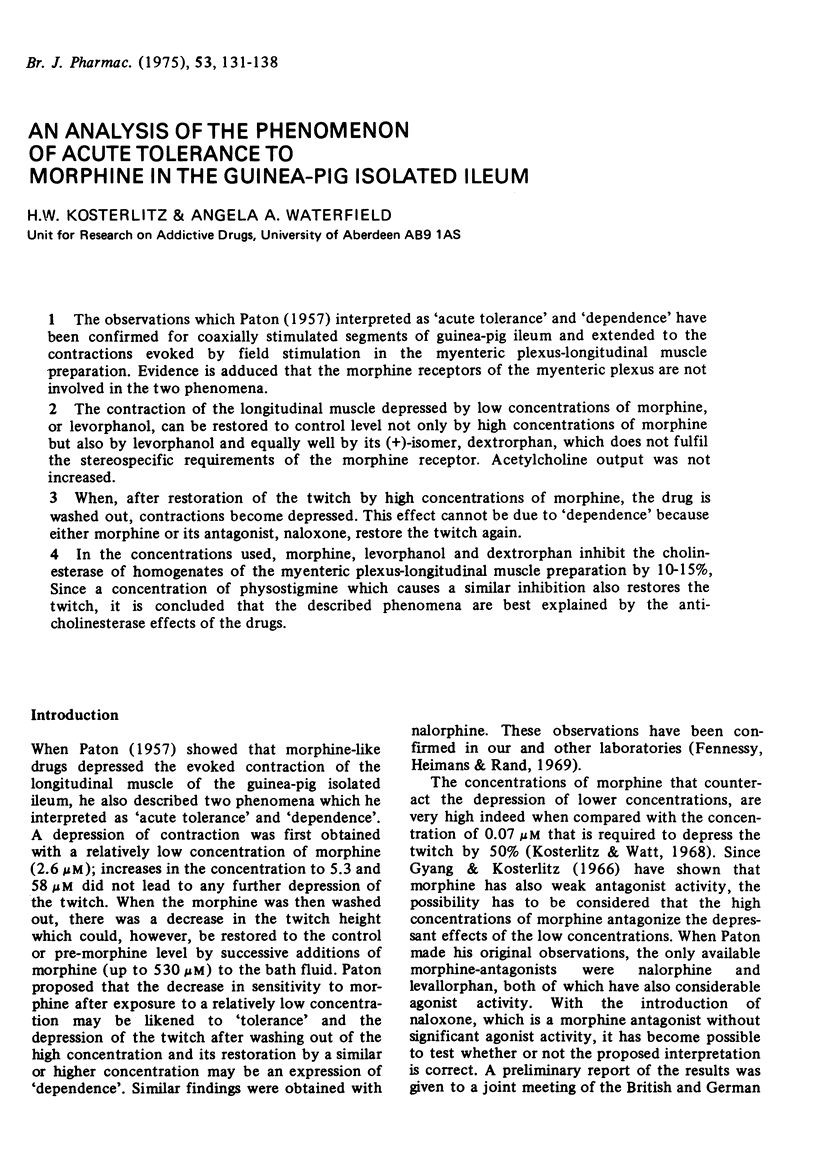
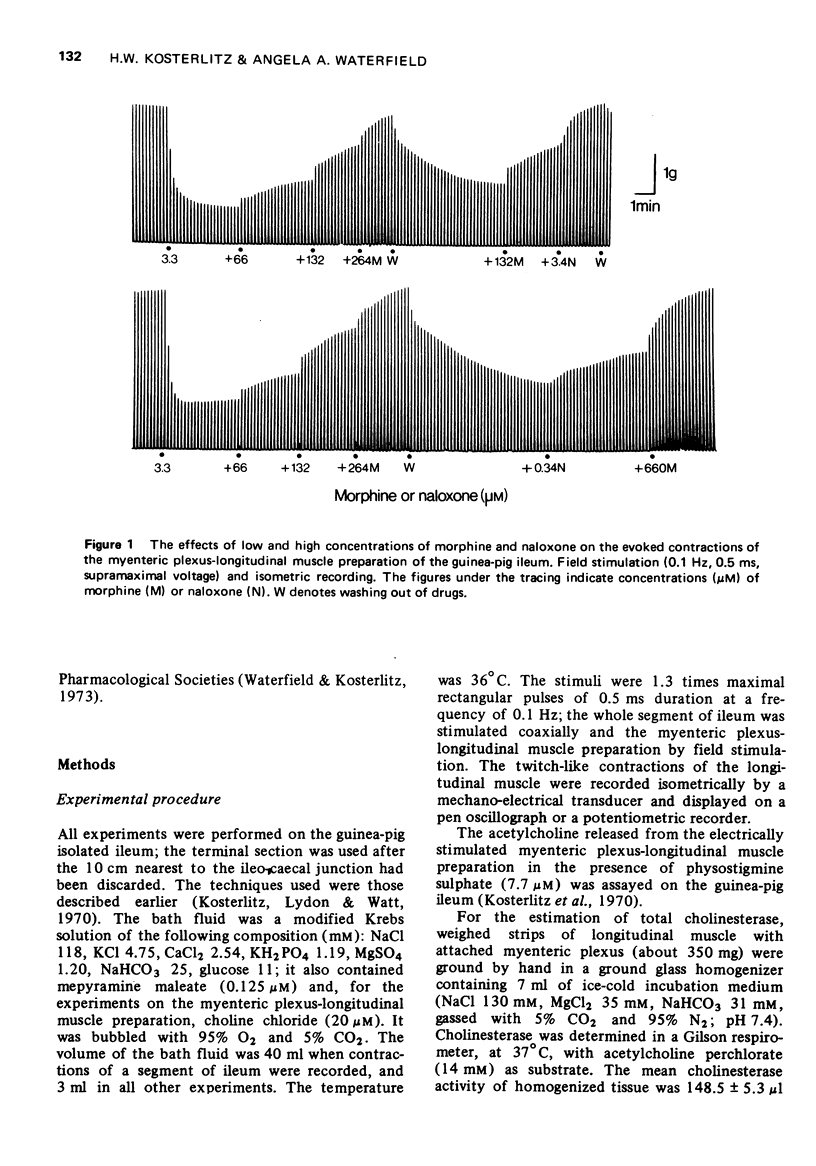
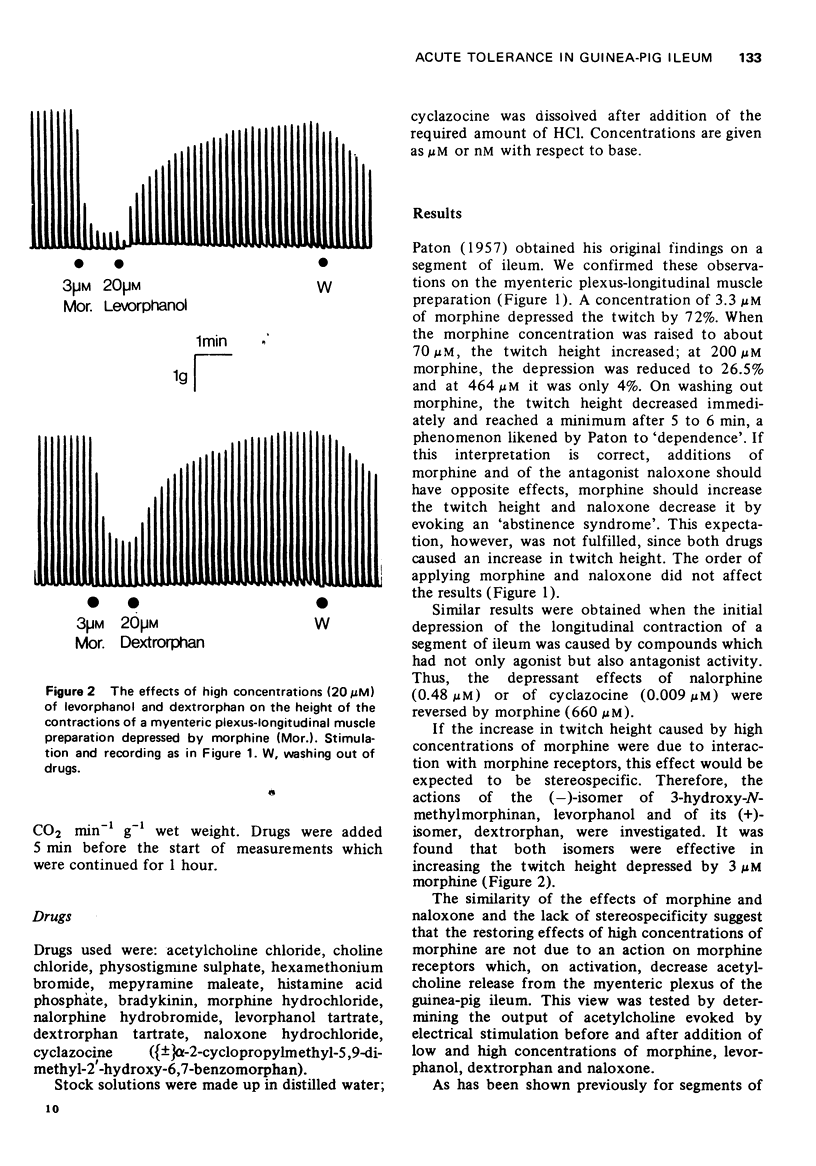

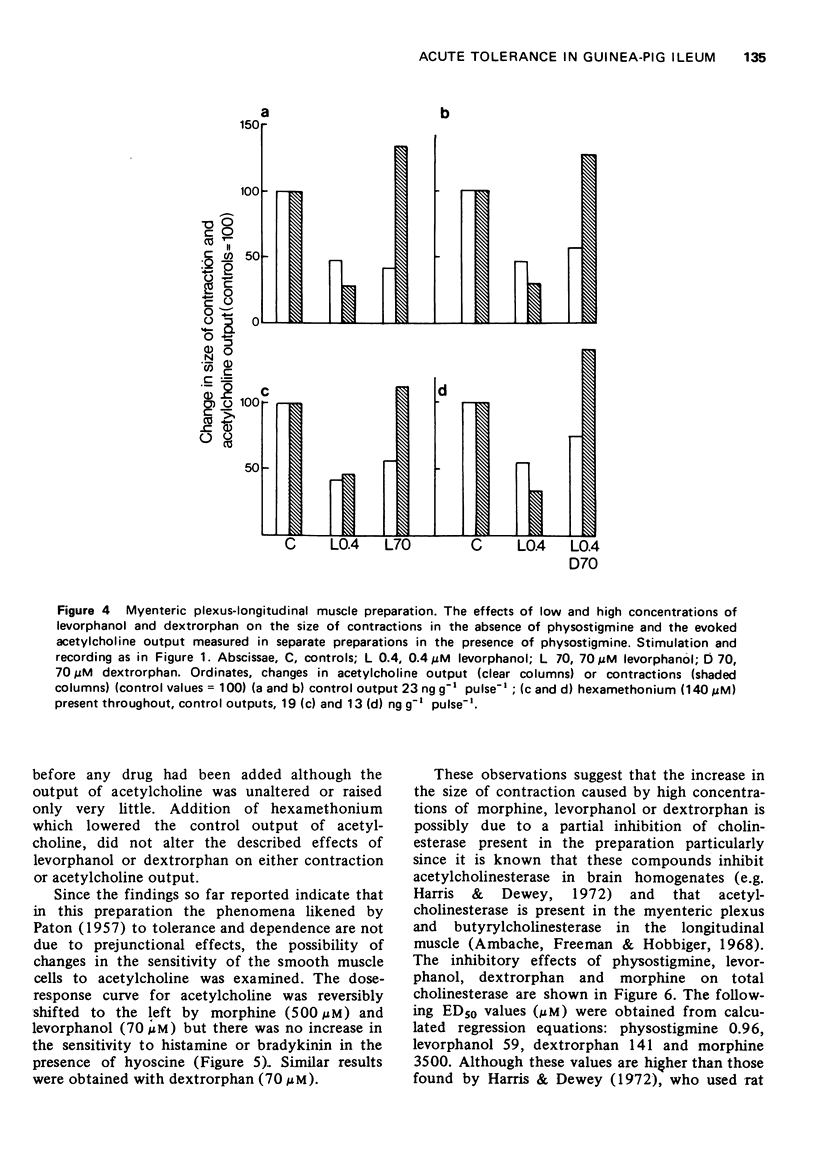
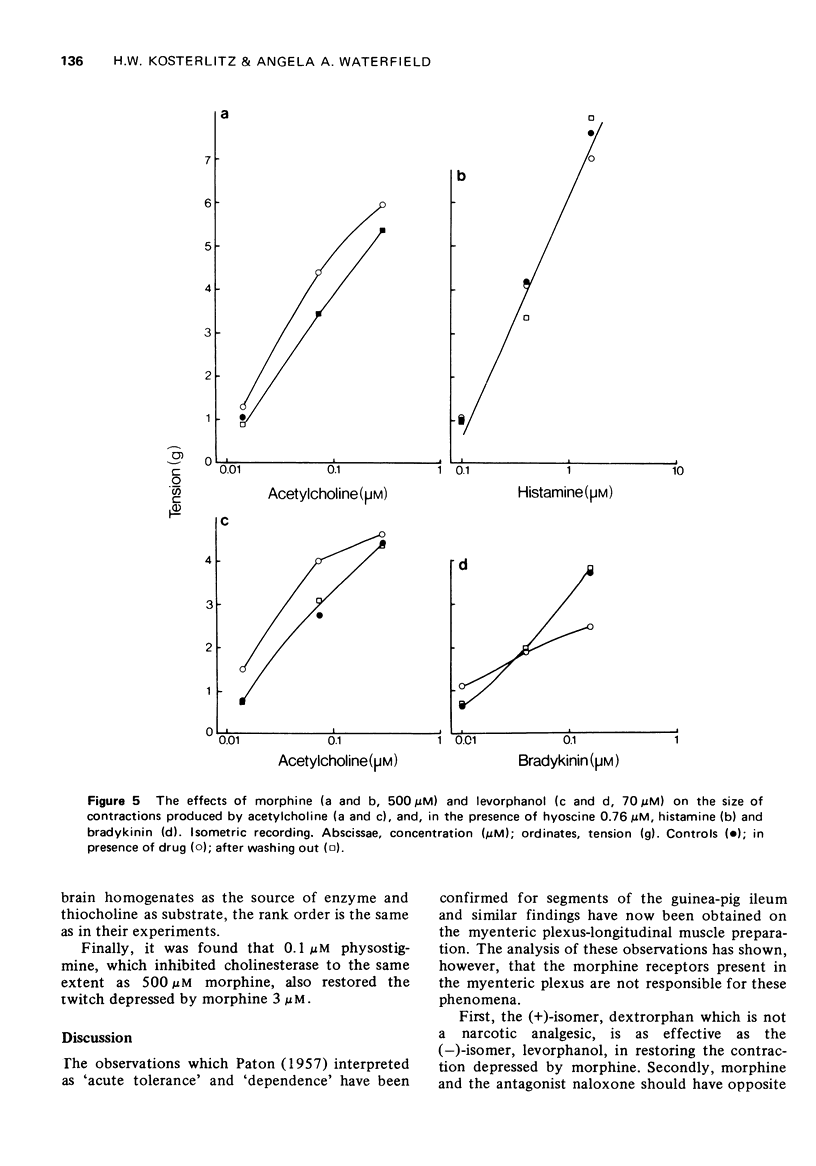
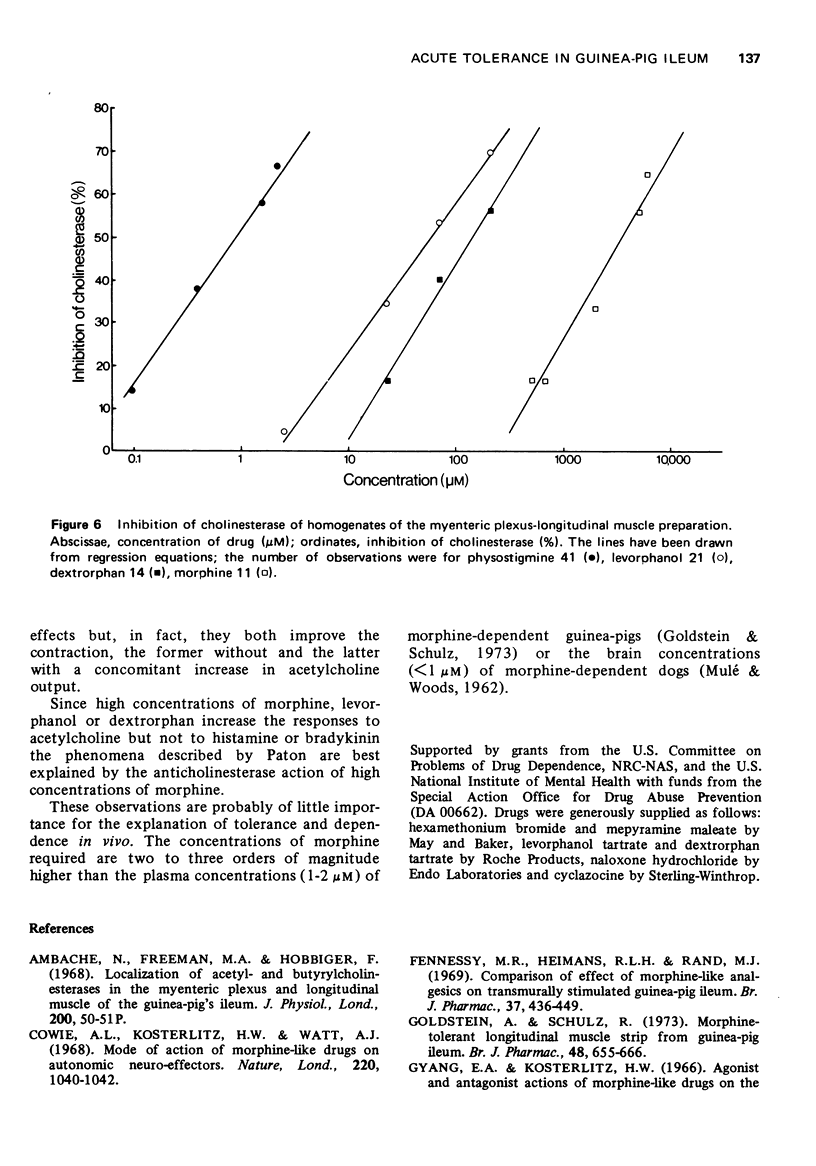
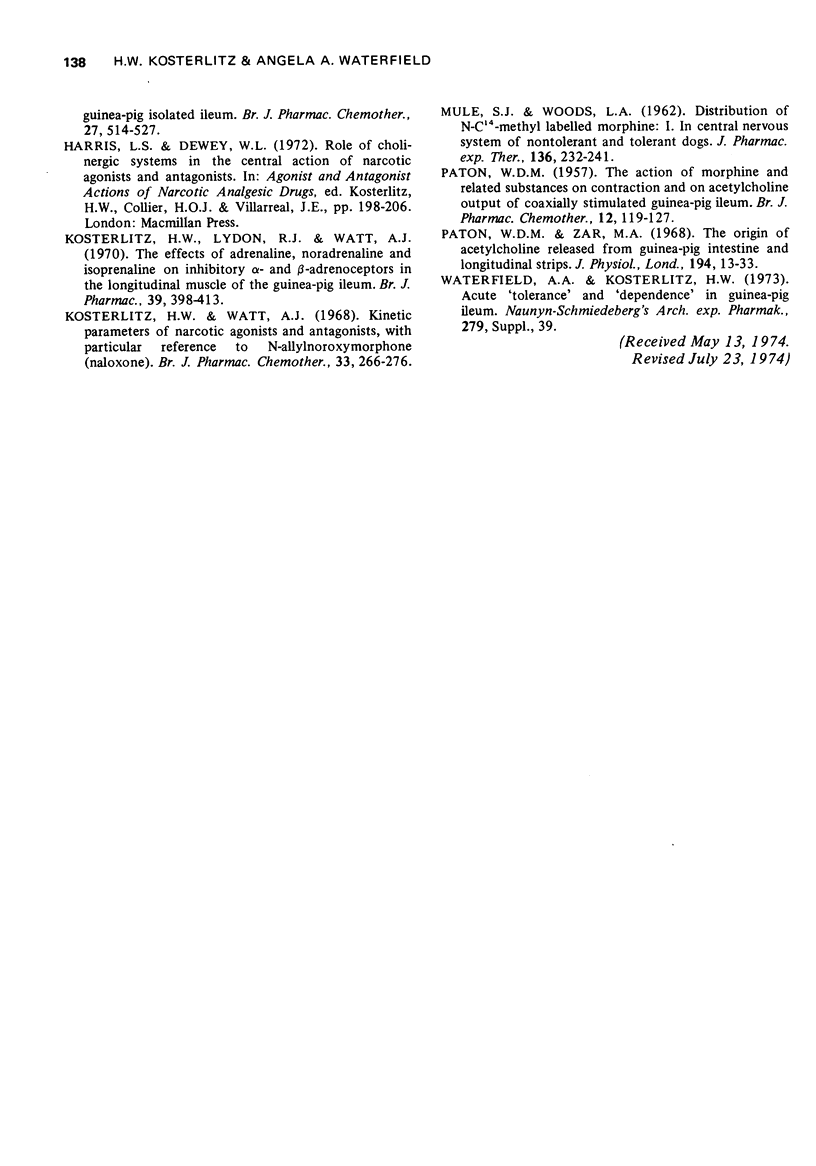
Selected References
These references are in PubMed. This may not be the complete list of references from this article.
- Cowie A. L., Kosterlitz H. W., Watt A. J. Mode of action of morphine-like drugs on autonomic neuro-effectors. Nature. 1968 Dec 7;220(5171):1040–1042. doi: 10.1038/2201040a0. [DOI] [PubMed] [Google Scholar]
- Goldstein A., Schulz R. Morphine-tolerant longitudinal muscle strip from guinea-pig ileum. Br J Pharmacol. 1973 Aug;48(4):655–666. doi: 10.1111/j.1476-5381.1973.tb08254.x. [DOI] [PMC free article] [PubMed] [Google Scholar]
- Gyand E. A., Kosterlitz H. W. Agonist and antagonist actions of morphine-like drugs on the guinea-pig isolated ileum. Br J Pharmacol Chemother. 1966 Sep;27(3):514–527. doi: 10.1111/j.1476-5381.1966.tb01864.x. [DOI] [PMC free article] [PubMed] [Google Scholar]
- Kosterlitz H. W., Lydon R. J., Watt A. J. The effects of adrenaline, noradrenaline and isoprenaline on inhibitory alpha- and beta-adrenoceptors in the longitudinal muscle of the guinea-pig ileum. Br J Pharmacol. 1970 Jun;39(2):398–413. doi: 10.1111/j.1476-5381.1970.tb12903.x. [DOI] [PMC free article] [PubMed] [Google Scholar]
- Kosterlitz H. W., Watt A. J. Kinetic parameters of narcotic agonists and antagonists, with particular reference to N-allylnoroxymorphone (naloxone). Br J Pharmacol Chemother. 1968 Jun;33(2):266–276. doi: 10.1111/j.1476-5381.1968.tb00988.x. [DOI] [PMC free article] [PubMed] [Google Scholar]
- MULE S. J., WOODS L. A. Distribution of N-C-14-methyl labeled morphine. I. In central nervous system of nontolerant and tolerant dogs. J Pharmacol Exp Ther. 1962 May;136:232–241. [PubMed] [Google Scholar]
- PATON W. D. The action of morphine and related substances on contraction and on acetylcholine output of coaxially stimulated guinea-pig ileum. Br J Pharmacol Chemother. 1957 Mar;12(1):119–127. doi: 10.1111/j.1476-5381.1957.tb01373.x. [DOI] [PMC free article] [PubMed] [Google Scholar]
- Paton W. D., Zar M. A. The origin of acetylcholine released from guinea-pig intestine and longitudinal muscle strips. J Physiol. 1968 Jan;194(1):13–33. doi: 10.1113/jphysiol.1968.sp008392. [DOI] [PMC free article] [PubMed] [Google Scholar]


